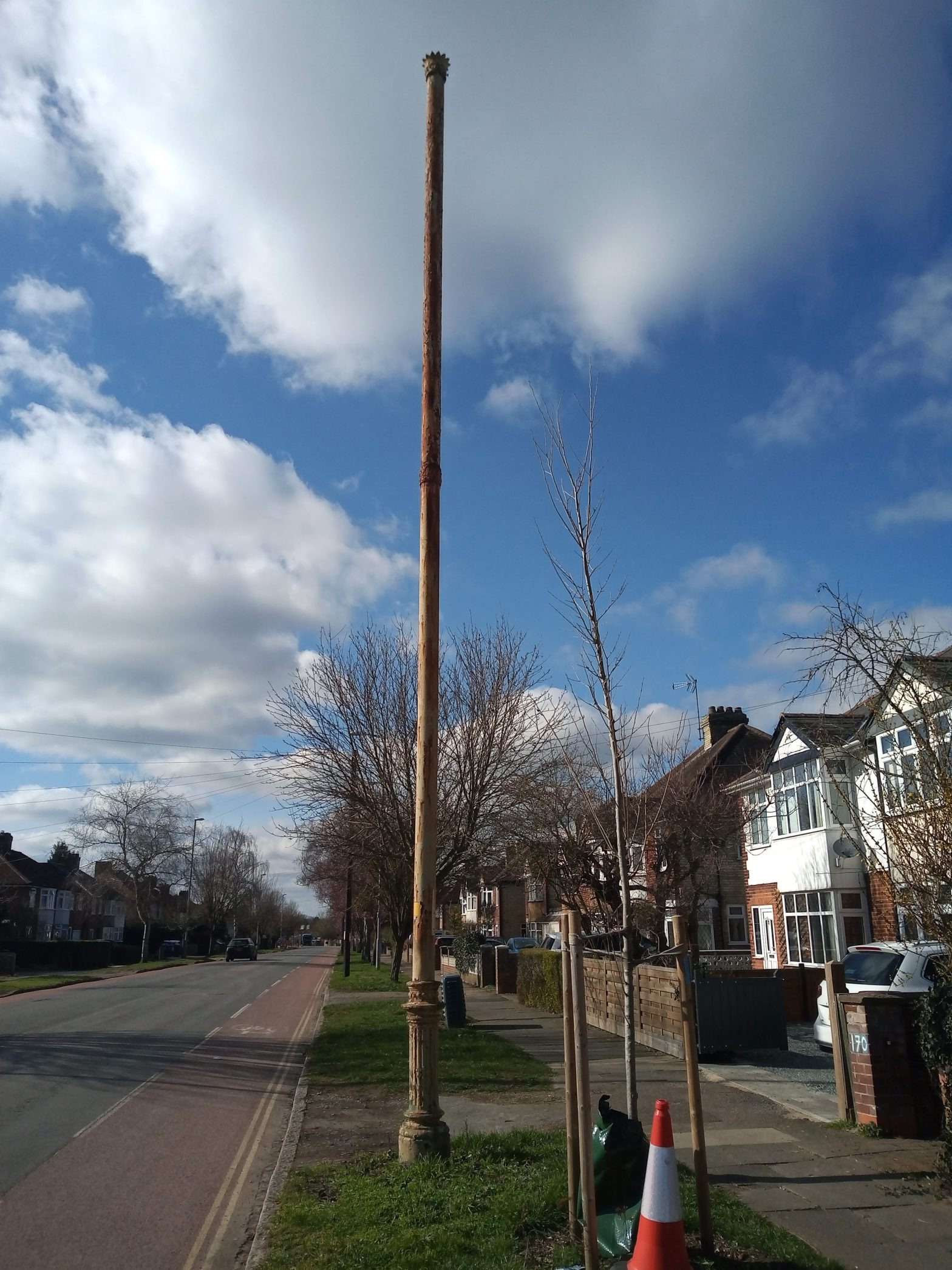Stinkpipes: a key to Cambridge’s less fragrant past
Contributor: Caroline Mead
You may feel that Cambridge is a rather clean and fresh-smelling kind of place, with all the greens and commons. But one piece of street furniture, found all over the place, suggests it was once a much smellier city.
If you’ve ever been to Cambridge city centre I’m sure you will have walked past a stinkpipe (or stench pole). You probably didn’t think anything of it, assuming it was a type of lamp post or telegraph pole. But once you get hunting for them, you realise they’re an entirely different beast. Stinkpipes were created with the intention of extracting nasty odours from underground sewers and dispersing them into the air. They tend to be taller (6–8 metres) and wider (about 15cm) than most other poles in residential streets, and they follow sewer routes. Some have been truncated so they’re much shorter than they were originally, but others are still at their original height.
They originate from London, around the time of the Industrial Revolution, when the Thames was essentially an open sewer. Flushing toilets were very rare, and waste of all kinds just ended up in the river. It reached a peak during the summer of 1858, which was known as The Great Stink. The effluent in the Thames began to ferment, and the terrible smell brought the city to a standstill. Two engineers, Joseph Bazalgette and Goldsworthy Gurney, were brought in to build a proper sewage system and design a simple way to ventilate the gas caused by its rotting.
They are made of cast iron, sometimes with the manufacturer’s name, and are often decorated in a uniquely Victorian style – look out for roses and carved decorations. They’re also hollow, so give them a knock if you want to check you’re looking at the real thing. They’re often painted in grey or green, and the original paintwork can still be seen in some cases.
If you fancy hunting for stink pipes in Cambridge, I recommend starting at the one outside 170 Gilbert Road. It’s still at its original height and has its decorative finial over the top. From there, stink pipes can be found on Midsummer Common (near the Manhattan Bridge, and at the crossing to Fair Street), on Emmanuel Road (Christ’s Pieces side), and even outside the Judge Business School. And there are many more. Once you’ve seen one, you’ll see them all over the place – legacy of the impressive Victorian sewage systems of old.
